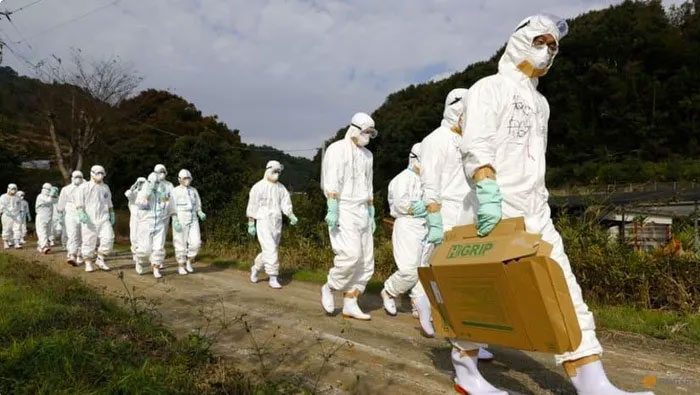In recent days, multiple serious outbreaks of avian influenza have been reported in Europe and Asia to the World Organization for Animal Health (OIE). This is a sign that the virus is spreading rapidly once again.
The spread of highly pathogenic avian influenza is putting the global poultry industry on high alert, following previous outbreaks that led to the culling of tens of millions of birds and the implementation of various trade restrictions.

Veterinary staff handling an avian influenza outbreak in northern Japan in 2020. (Photo: Reuters)
Recent outbreaks have caught the attention of epidemiologists because the virus can transmit from birds to humans. Since the beginning of the year, China has reported 21 cases of human infection with the H5N6 virus, surpassing the total for all of last year.
South Korea reported an outbreak at a farm housing approximately 770,000 birds in Chungcheongbuk-do province. All of these animals were culled, according to the OIE on November 15.
Japan has also detected its first outbreak this winter, with an H5N8 outbreak at a farm in the northeastern part of the country.
In Europe, Norway reported an H5N1 outbreak in the Rogaland region, which involves about 7,000 birds.
The Belgian government is increasing the country’s risk level regarding avian influenza, requiring poultry to be kept indoors starting this week, after a highly pathogenic avian influenza variant was found in a wild goose near Antwerp.
Neighboring countries France and the Netherlands have implemented similar regulations since the beginning of this month.
Avian influenza typically peaks in the fall, spreading through migratory birds.
Humans can contract the flu from birds through consumption or direct contact.


















































